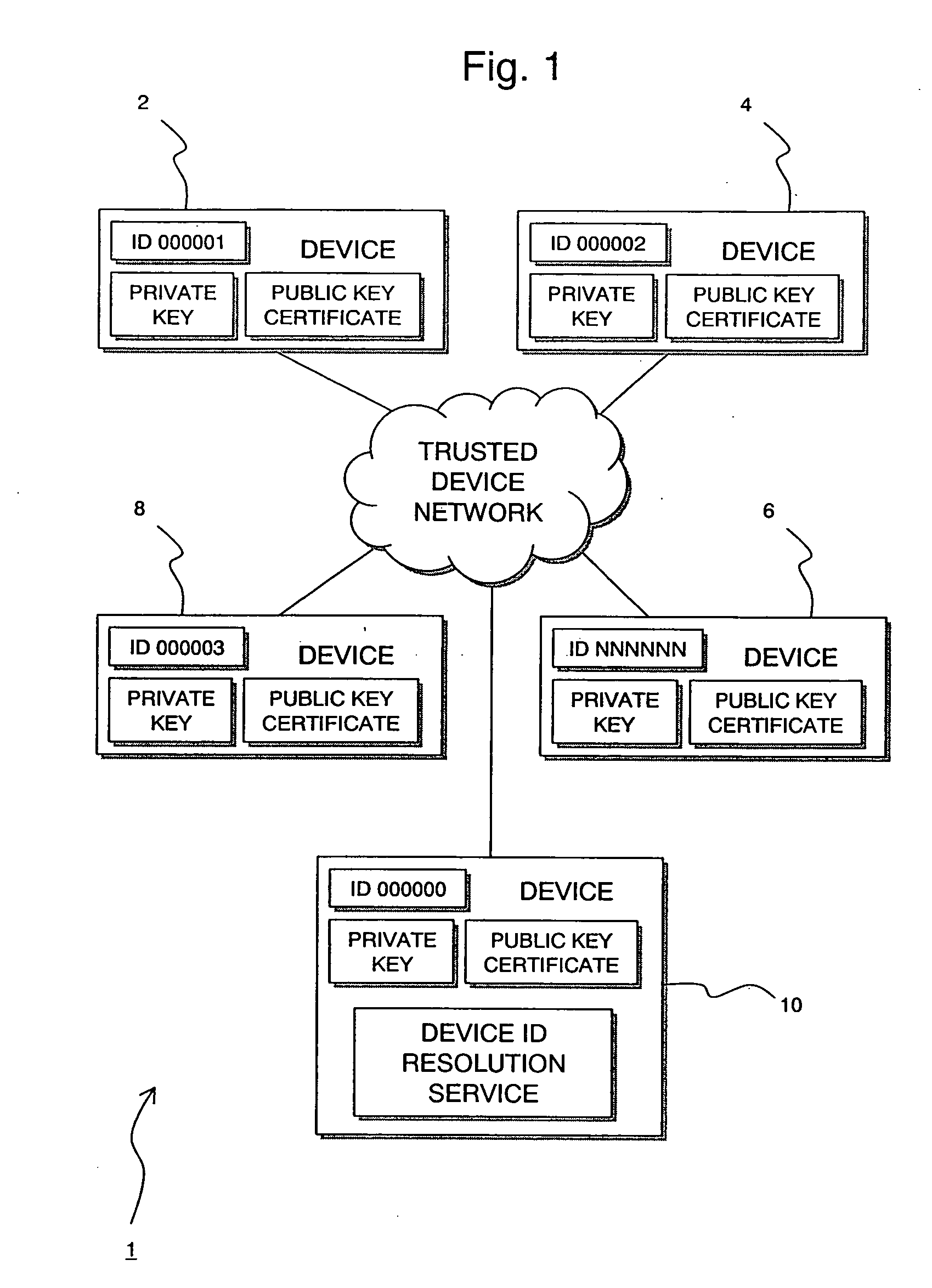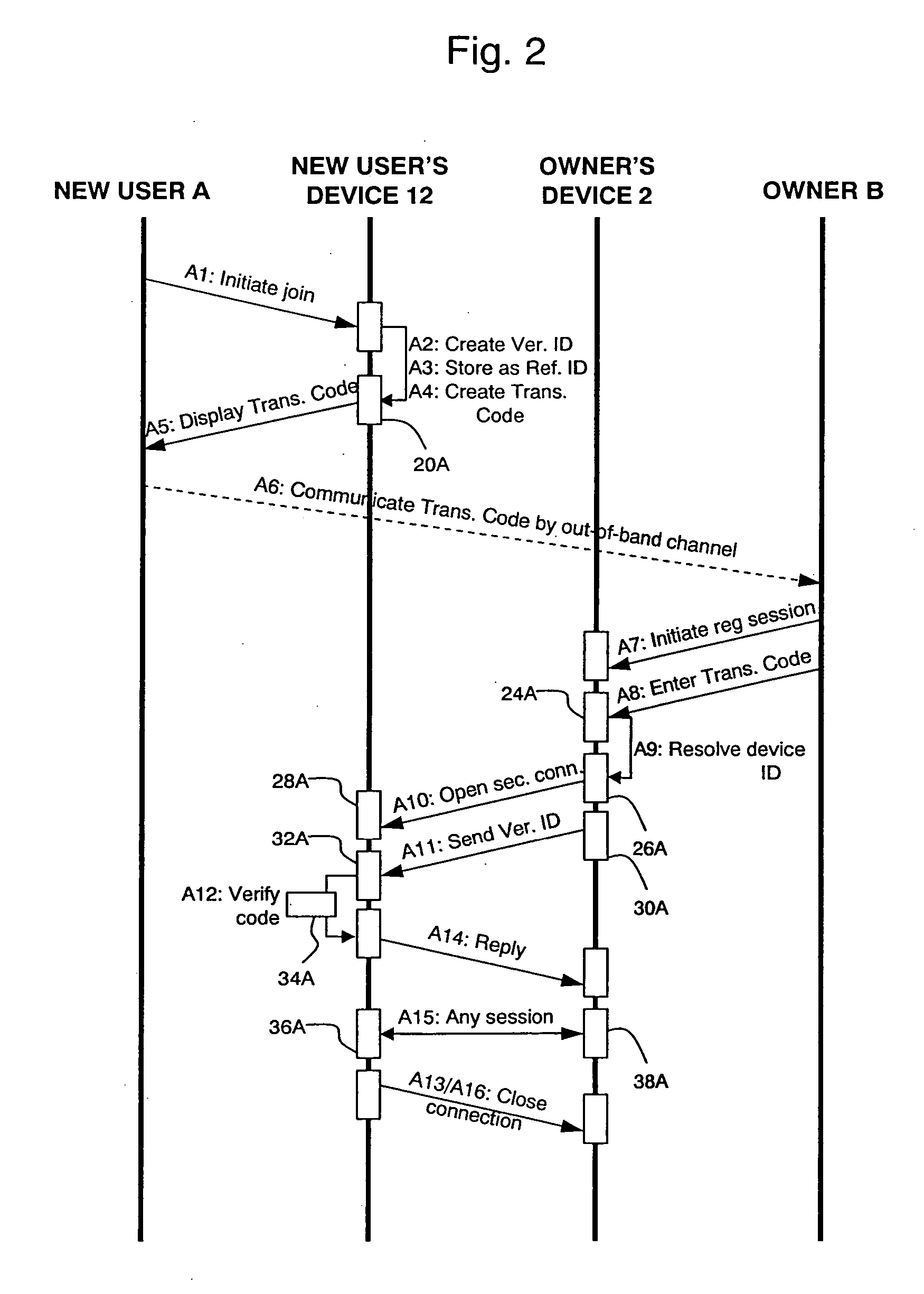Method and apparatus for performing a secure transaction in a trusted network
a trusted network and transaction technology, applied in the field of methods and apparatus for performing a secure transaction in a trusted network, can solve the problems of not having the standard software configuration required, unable to provide security and privacy, and difficult for untrained users to understand and use current security infrastructure, etc., to achieve optimal user experience, convenient transaction initiation, and sufficient computational power
- Summary
- Abstract
- Description
- Claims
- Application Information
AI Technical Summary
Benefits of technology
Problems solved by technology
Method used
Image
Examples
first embodiment
[0089] In the first embodiment, the verification identifier is sent out-of-band (using the communications channel 22) in one direction and in-band (using the secure connection) in the opposite direction. “Out-of-band” in this context means using a different communications channel to the secure connection (“in-band” channel) over which the secure transaction is to be carried out. Therefore, in an embodiment of the present invention the verification identifier is sent over two different channels, one of which is the secure connection, and verified before allowing the secure transaction to take place over the secure connection.
[0090] The out-of-band channel need not be secure in a technical sense, since there need not be any encryption or other security technology associated with it. It can be secure in a human sense, with the level of security being trusted by both users. The security can be quite low; for example a phone call could have an eavesdropper, but this level of security mig...
third embodiment
[0146] However, if it is known that multiple transactions will not occur, or that the verification identifier and corresponding stored reference identifier will be discarded before another transaction is initiated, then a unique verification identifier is not required. For example, in the third embodiment where two verifications are required (one in each direction), the basic and further verification identifiers could be the respective device identifiers of the two devices, effectively forming an overall verification identifier comprising both device identifiers. This would uniquely identify the transaction as being between the two devices, which may be sufficient, although it would not differentiate between multiple concurrent transactions between the same two devices. Likewise it may be sufficient to use the device identifier of one of the devices only as the reference identifier, which would be sufficient if multiple transactions involving that device were not initiated concurren...
PUM
 Login to View More
Login to View More Abstract
Description
Claims
Application Information
 Login to View More
Login to View More - R&D
- Intellectual Property
- Life Sciences
- Materials
- Tech Scout
- Unparalleled Data Quality
- Higher Quality Content
- 60% Fewer Hallucinations
Browse by: Latest US Patents, China's latest patents, Technical Efficacy Thesaurus, Application Domain, Technology Topic, Popular Technical Reports.
© 2025 PatSnap. All rights reserved.Legal|Privacy policy|Modern Slavery Act Transparency Statement|Sitemap|About US| Contact US: help@patsnap.com



